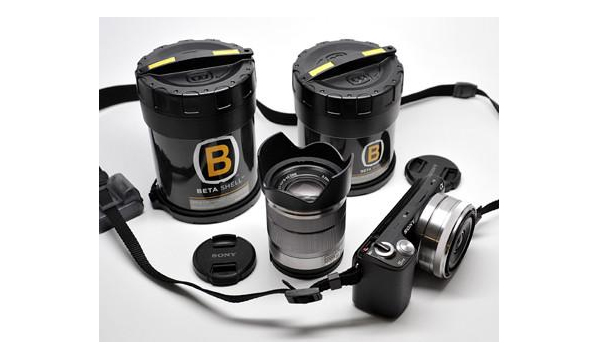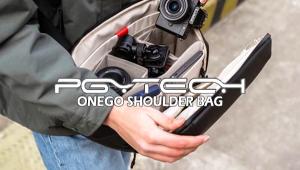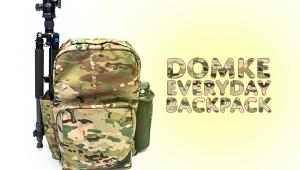How to Buy the Right Photo Lens Case: What to Look for & What to Avoid

We’re right in the middle of Photokina frenzy, and you’re probably looking for news about groundbreaking new products, not cases or other more mundane accessories. Understood! So file this for later when the clamor from Cologne subsides. This is a lens case shopping guide with dos and don’ts and some personal brand recommendations.

Lens cases serve one simple purpose: to protect a lens when it’s not attached to a camera. Many come with belt loops so that they can be worn in the field or attached to a backpack or gadget bag. Some use the military MOLLE-style clip which offers very secure attachment and broad compatibility. Some, especially the larger ones, have shoulder straps. So when shopping for a lens case, ask yourself how you intend to carry it.
Nylon and PU (polyurethane) are often used to fabricate the exterior of a lens case. Under most circumstances I’ve found nylon to be more resistant to abrasion and discoloration. PU has the appearance and nearly the feel of real leather if that matters to you.
The inside is often lined with plain, smooth nylon, but some cases have a plush lining. Although less friendly to the touch, I’ve found the simple nylon linings easier to clean and just as protective as microfiber or imitation velvet. Plush fabric can harbor dirt and grit which, over time, can abrade shiny lens barrels.

Avoid Old Leather Cases
Never store lenses inside genuine leather cases for an extended period of time. In fact, for my money it’s smart to avoid leather lens cases altogether. Leather is great for gadget bags, backpacks, straps and shoes, but not so hot for lens cases. Based on personal experience (and not scientific research) lenses kept inside leather lens cases develop mold and/or fungus faster than lenses left naked.
My guess is that leather retains moisture and promotes the growth of damaging microbes.
By the way, if you do have a case or bag (or shoes, for that matter) that’s tinged with mold, leave it in the sun after cleaning with water and strong soap. Good old UV light annihilates most fungus and other harmful bacteria. Some mold can be hyper-allergenic or even contain microtoxins, so use your own discretion whether to refurbish or discard.

Bigger is Better
Given the choice between a snug fit and a little excess room, go with the larger option. A lens that shifts slightly inside a properly padded case should not be damaged in any way. On the other hand, a case that is so tight that it requires an effort to remove the lens can be a royal pain in the tail to use when you’re in a rush. Tightness can also lead to the dislocation of the rubber grip ring on older lenses.
Remember that when changing lenses you need a place to store the lens that you remove from the camera. If you’re heading out carrying one camera with a lens attached plus a second lens inside a case, make sure that the case is large enough to accommodate the larger lens. Sounds like common sense, but surprisingly it’s often overlooked.
Manufacturers’ Proprietary Cases
Some manufacturers—Pentax, Sigma and Tamron come to mind—supply high quality cases with their lenses. Hats off to them! Others offer cases as an optional accessory. Some are quite good and some are mediocre, and most are expensive. If your lens requires a special case because of size or accessories (e.g., mirror lenses with rear mounted filters) then the manufacturer’s prime case is your best choice. Otherwise let your wallet be your guide.

Wrap Star
Think of it as a thick hand towel with Velcro on each corner. Properly folded, a lens wrap provides excellent protection. The downside is accessibility. Wrapped lenses but must be carried inside a bag or backpack. When you need to change lenses quickly, finding a suitable place to unwrap and wrap lenses can be challenging. Wraps also tend to be bulky and take up more space than nylon cases.
eBay Miscellaneous Asian
There are probably some genuine bargains available on auction sites, but I sure haven’t found them. And it’s not for lack of trying. Some look good but are poorly sewn and/or have flimsy belt loops.
My advice is to stick with a name brand instead of risking a $600 lens on a $9 lens case.

Recommended Brands
Here are 10 of the top brands listed in alphabetical order. In all instances, the hyperlink leads to the manufacturer’s website, not to a retailer. For sizes and prices, visit your local camera shop or favorite online reseller.
—Jon Sienkiewicz
- Log in or register to post comments
















































